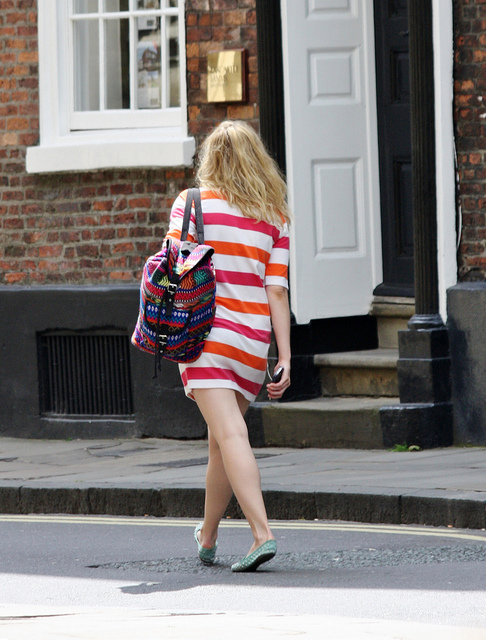The psychology of perception tests an age-old fashion foible
| 10 Sep 2016Horizontal stripes on clothing are in fact slimming
The dress sparked one of the hottest fashion debate of the 21st century, but another mystery has occupied scientists and fashionistas alike since the mid-19th century: do horizontal stripes make you look fat? The answer may seem obvious, but experimental results and a well-documented illusion contradict many people’s intuition that horizontal stripes make the wearer look wider.
As pioneering vision scientist Helmholtz noted back in 1867 (see page 206!), a person wearing horizontal stripes should, contrary to popular belief, appear thinner than someone with vertical stripes. This observation is the basis for the Helmholtz illusion, at least as it applies to shapes, not bodies. A team of researchers from Japan tested whether the size of the body wearing stripes changes the strength of the effect.
In line with previous research, they found that the common idea that horizontal stripes make one look fat is in fact wrong. In the experiment, a group of students rated computer-generated figures wearing either a horizontally or vertically striped shirt. The figures had different degrees of thin and fat body shapes to determine when the horizontal- and vertical-striped figures looked ‘equally fat’ for each observer. This measurement is a baseline for each person’s perception, and all participants perceived a person with horizontal stripes to be thinner than a person with vertical stripes. This agrees with the phenomenon of the Helmholtz illusion, that a horizontally striped square is perceived as ‘thinner’ than one with vertical stripes.

Horizontal-striped dress. Image by Gareth Williams / CC BY 2.0
With the experimental bodies, however, the effect was stronger for the thin figures than the fat ones. Thus, as the title of this research paper states, “the Helmholtz illusion makes you look fit only when you are already fit”. Whether the students were presented with the fat or thin figures first also made a difference: if fat figures were shown first, the Helmholtz effect was diminished, and for the fat figures the judgments actually bumped the baseline in the opposite direction. In this condition, the horizontal stripes on fat figures really were perceived to make the figure fatter.
The main takeaway from this simple experiment is that context and timing can have a large effect on how something is perceived. People’s perceptions are also far from uniform, as the researchers found that the students differed a lot in their ‘fatness’ judgments, even though they were all broadly in the same direction. The researchers suggest that horizontally-striped maxi dresses may maximize the slimming effect of the Helmholtz illusion, but the clothes and bodies of surrounding people can conceivably alter the intended perception.
Citation:
Ashida, H., Kuraguchi, K., & Miyoshi, K. (2013). Helmholtz illusion makes you look fit only when you are already fit, but not for everyone. i-Perception, 4(5): 347-351. DOI: 10.1068/i0595rep
